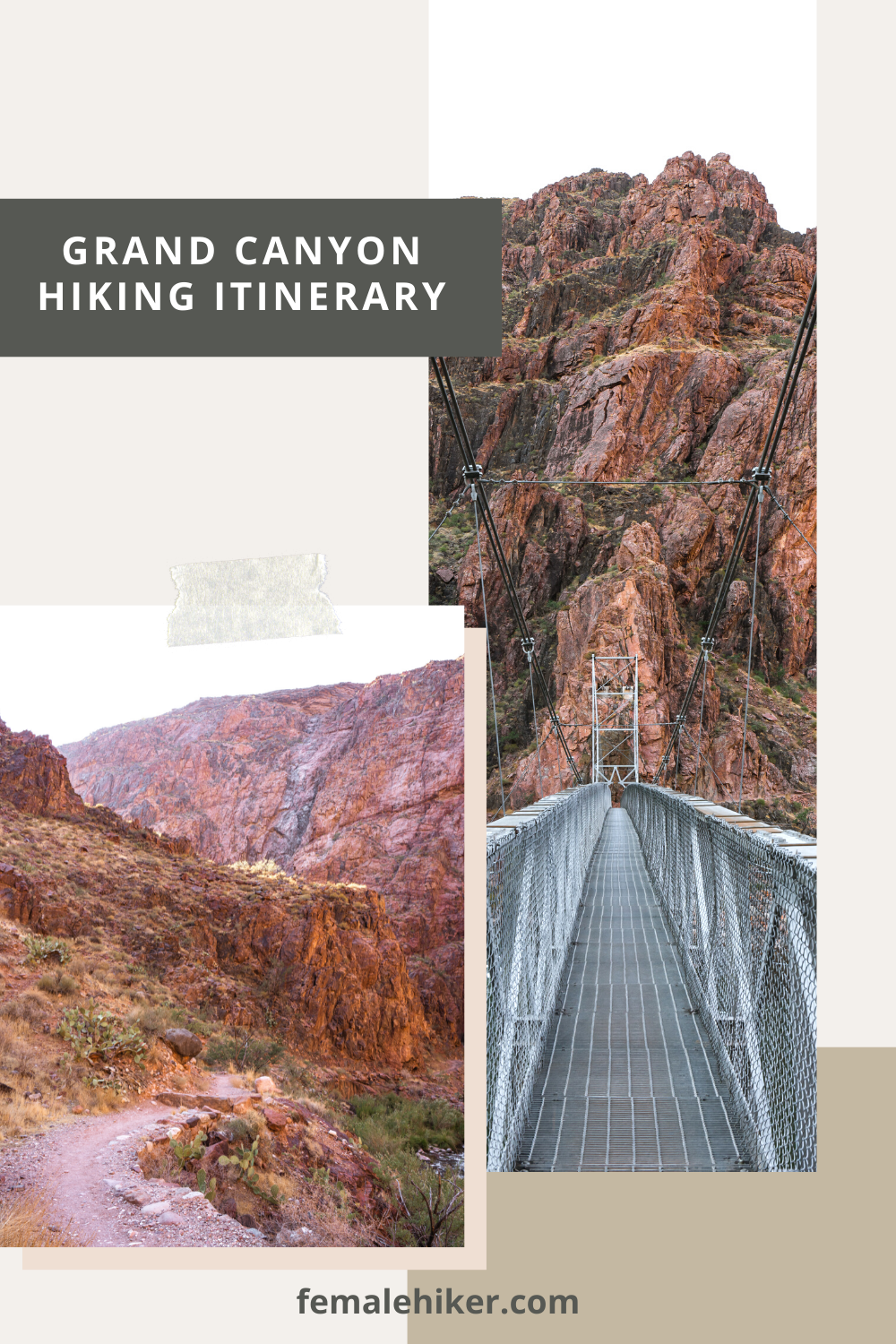
The Grand Canyon is the 6th most visited National Park and it’s easy to see why! I’ve put together a complete Grand Canyon itinerary to help with your first visit.
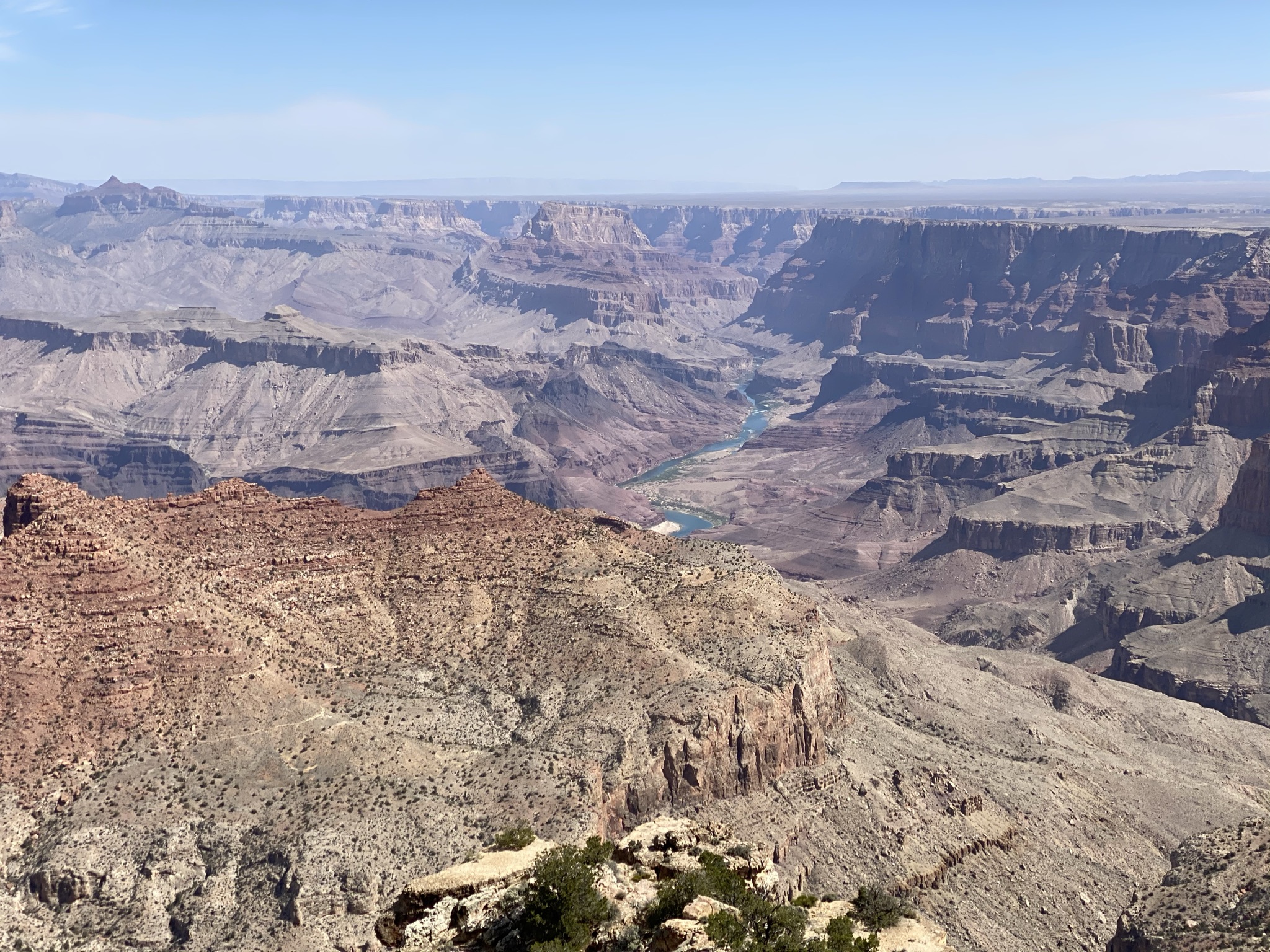
Intro to The Grand Canyon
The Grand Canyon is located in the Northern part of Arizona. As described, this National Park is a giant canyon that is a mile deep and 18 miles wide. Parts of the Colorado River flow through and create beautiful geological landscapes.
The Grand Canyon is truly a spectacular sight and photos honestly do not do it justice. I’ve seen photos from professional photographers and I would say that it doesn’t capture even 50% of the beauty of the Grand Canyon. Because of the layout of the Grand Canyon, most of your views and hikes will be descending into the canyon, as opposed to hiking up a peak. This also means that you will generally be at the highest point of the hike, and you will have 360 degree, unobstructed views for most of your hike.
To get started with your Grand Canyon itinerary, know that there are two main entrances to Grand Canyon National Park: North Rim and South Rim.
Although North and South Rim may look close in mileage, it actually takes 4 hours to drive between North and South Rim. Alternatively, adventurous hikers or runners can complete the famous 25+ mile Rim to Rim trail.
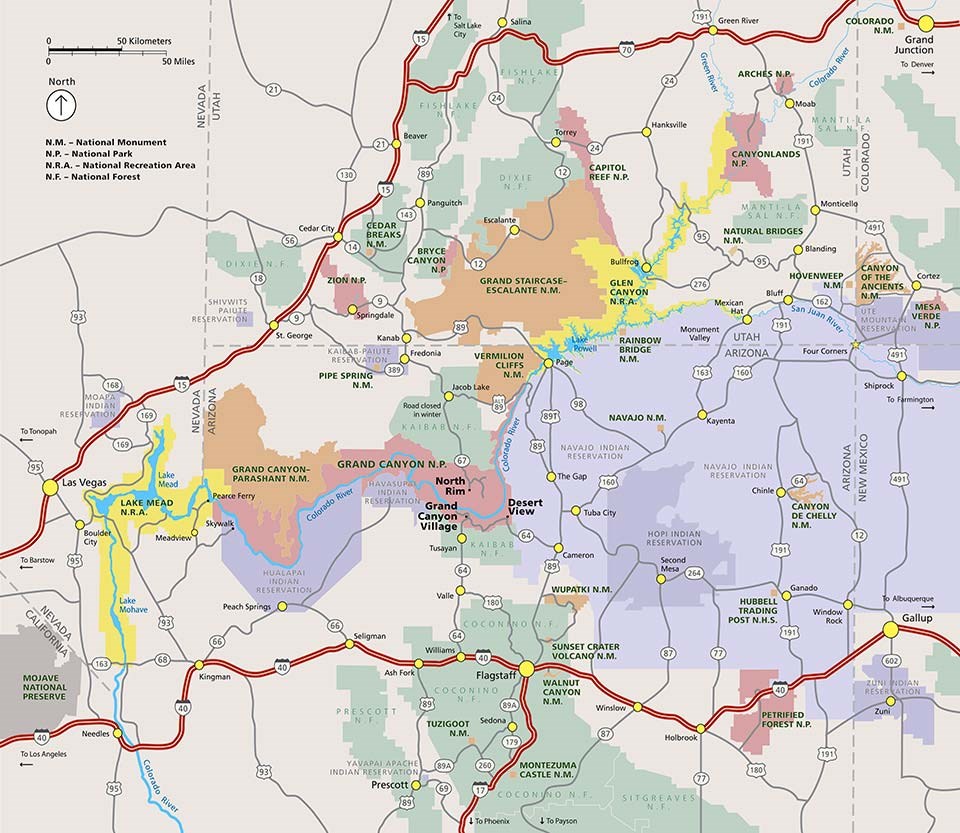
Should You Visit the North Rim or South Rim?
The North Rim and South Rim of the Grand Canyon are vastly different experiences. When deciding if you should visit the North Rim or South Rim, you should consider a few factors.
The North Rim is much more remote. There is only one campground called the North Rim campground and one lodge called the Grand Canyon Lodge. There are much fewer visitors which means you will have more peace and quiet.
The South Rim is what people usually say when they say they are visiting the Grand Canyon. The majority of visitors will come to the Grand Canyon South Rim, where there are plenty of hotels, motels, restaurants, to choose from. There is also an easy-to-use shuttle service to take you around the area. On the other side, the South Rim will be much more crowded during high season.
Both North Rim and South Rim have spectacular viewpoints and hikes! There is maybe a little more to do in South Rim. If you are looking to spend a longer time for your Grand Canyon itinerary, I would suggest the South Rim.
When to Go to The Grand Canyon
The best time to visit the Grand Canyon is in the Spring (from March to May) and Fall (from September to November).
Visitors will flock to the Grand Canyon in the Summer because it aligns with their vacation time, but temperatures can soar to a dangerous 100+ degrees in July and August. Because you are hiking from higher elevation to lower elevation in the Grand Canyon, the temperature can dramatically shift once you are at the bottom of the canyon. There is a famous area south of Cottonwood Campground called “The Box” that can infamously reach up to 130 degrees. You do not want to be here in the heat of the summer!
On the other end of the spectrum, winter can be brutally cold in the Grand Canyon. You will likely be faced with snow and heavy winds during your trip. On the bright side, the snow does make winter in the Grand Canyon very beautiful. If you are visiting in the Winter, be sure to check the NPS website for the latest Grand Canyon weather and road conditions and ensure that you are packing the right winter gear.
How to Get To The Grand Canyon
Did you know that 2.9 million people visited the Grand Canyon in 2020? The closest big town to the Grand Canyon South Rim is Flagstaff, Arizona but visitors can easily fly into Las Vegas or Phoenix to get to the Grand Canyon.
Both Las Vegas and Phoenix are serviced by large airports. Car rentals should also be fairly easy so you can rent a car for your adventure.
From Las Vegas to the Grand Canyon
From Las Vegas to the Grand Canyon, you will have the easiest access to the Grand Canyon from the North Rim. On your way there, you will pass by the town of Kanab. You can also access the Grand Canyon from the South Rim at roughly the same distance.
From Kanab, the North Rim is only 1.5 hours drive away. This town is becoming more and more popular every year. It’s a great outdoors town and base for many of your hiking adventures. Check out my blog posts 5 Favorite Things to Do in Kanab or Weekend Itinerary for Winter in Kanab for more details.
From Phoenix to the Grand Canyon
From Phoenix to the Grand Canyon, it is best to visit the South Rim. It is a 4-hour drive to the South Rim of the Grand Canyon. Along the way, you will stop by some of my favorite hiking towns Sedona and Flagstaff. Check out my blog post Sedona Hikes for First Time Visitors for more details on Sedona.
What to Pack for the Grand Canyon
Hiking Boots / Shoes
Hiking in the Grand Canyon can be slippery. The hikes can be deceptively difficult and you want to make sure you have good shoes for your Grand Canyon itinerary! I usually choose between hiking boots or shoes, depending on your comfort level.
Sun Protection
Sun protection is super important for hiking in the Grand Canyon. The sun can be brutal out there, especially when it hits 100 degrees
Water Storage
I personally prefer using an MSR Drom Bag because I’m fairly lazy to take water bottles out of my bag, but both options are great. Make sure to bring plenty of water for your Grand Canyon itinerary.
In the summer, I will bring around 1L per hour of hiking. In the winter, I will lessen that to around 0.5L per hour of hiking.
Summer Hiking Clothing
I change my hiking gear a bit when I am hiking in the summer. This is to optimize for the hot temps of course.
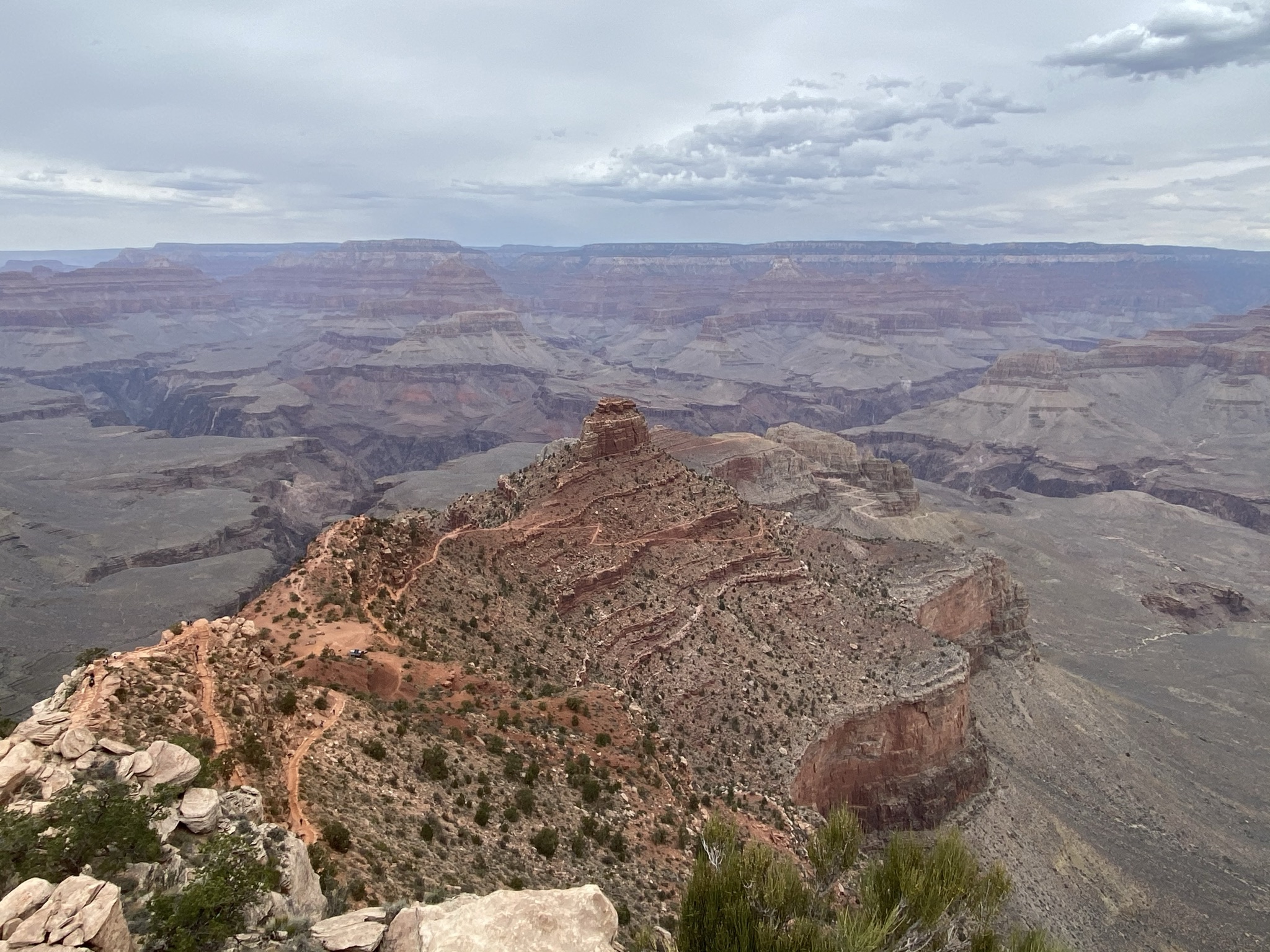
Your Grand Canyon Itinerary
There are so many options for activities in the Grand Canyon, it can get overwhelming and confusing in terms of what to do. To make it easy for you, I’ve marked the things that I would say are must-do activities for any Grand Canyon itinerary.
Best Hikes and Viewpoints from the South Rim
Here are the best hikes in the South Rim that you won’t want to miss
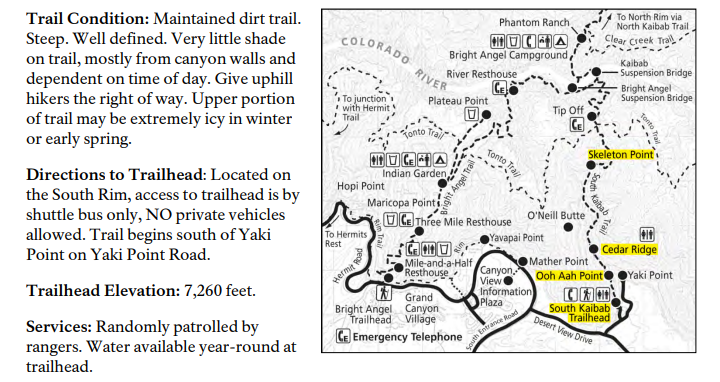
1. South Kaibab Trail to Skeleton Point – 5.8 miles, 2000 ft elevation change
The South Kaibab Trailhead is one of the main trailheads in the Grand Canyon South Rim. Because South Kaibab is a there-and-back trail, you can actually turn around at any point.
Many visitors will stop at Cedar Ridge, but I highly recommend going all the way to Skeleton Point for the views. On the way there, you will pass multiple viewpoints to take photos from, including the aptly named Ooh Ahh Point.
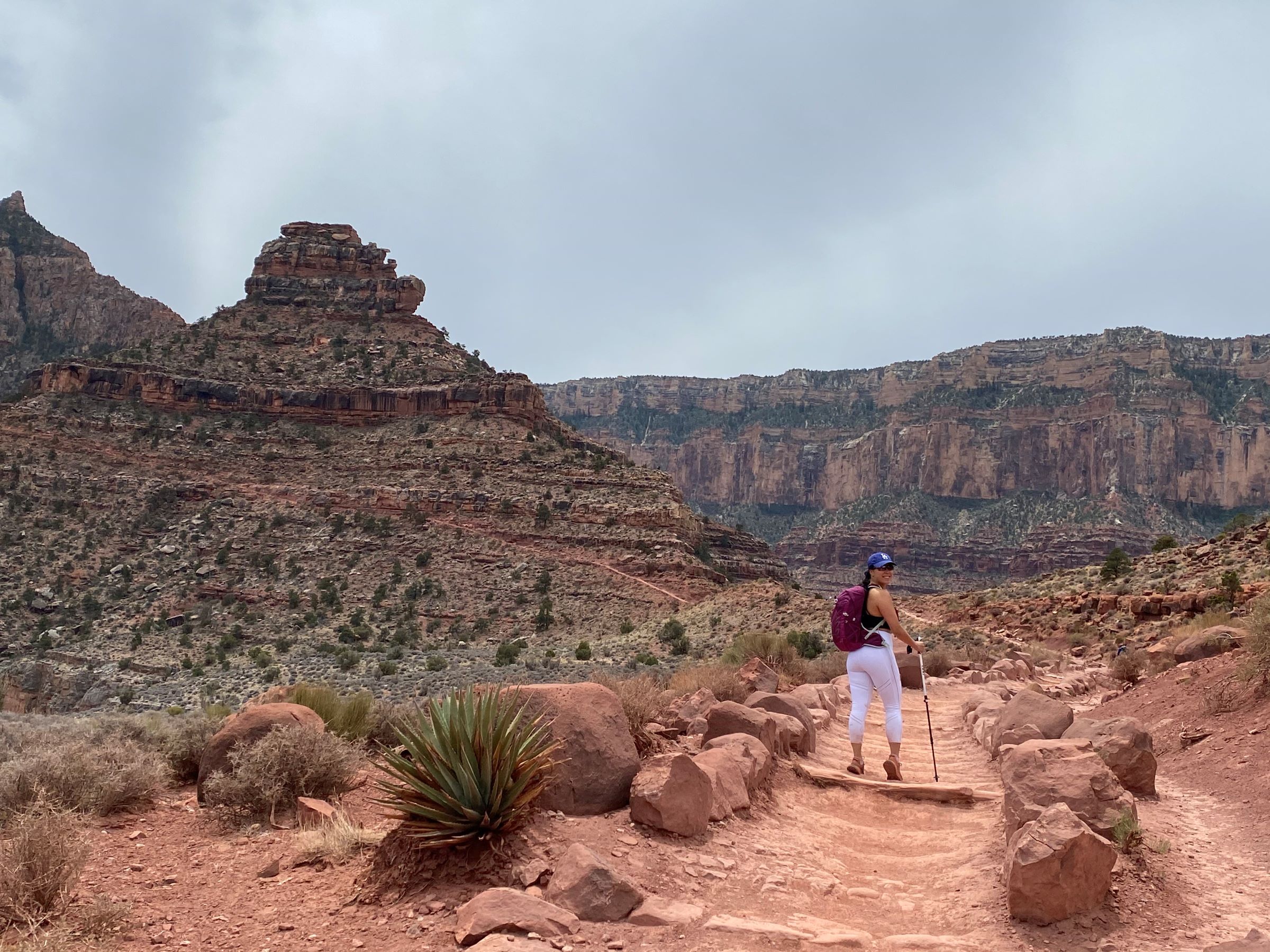
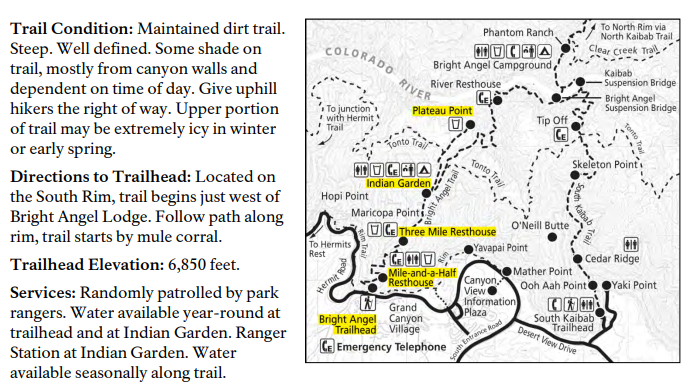
2. Bright Angel Trail to Indian Garden – 9 miles, 3000 ft elevation change
The Bright Angel Trailhead is the other popular trailhead from the Grand Canyon South Rim. It’s hard to say which one is better because both have different viewpoints of the Grand Canyon. South Kaibib is probably the more popular of the two, but visitors should really try to check out both.
Bright Angel Trail is again a there-and-back trail. If you can make it, I recommend going to Indian Garden but you can also stop at the 1.5 mile resthouse to make it a 3 mile total journey. I would put this trail second on a Grand Canyon itinerary.
3. Rim Trail to Mather Point and Yavapai Point – Less than 1 mile, flat
The Rim Trail goes along the top of the South Rim. Personally, I think that you don’t need to hike the entire rim trail for your Grand Canyon Itinerary. The two main points that you will enjoy are Mather Point and Yavapai Point.
4. Desert View Watchtower and Grandview Point – Driving from the south on Route 64
Along Route 64 in South Rim, you will have two great scenic points where you can park your car and get spectacular views of the Grand Canyon. There are a couple on Route 64 but my favorites are Desert View Watchtower and Grandview Point.
Because these are so easy to get to and minimal effort is required, it should be on any Grand Canyon itinerary!
Where to Eat in the South Rim
Unfortunately, food options are not great at the Grand Canyon. It’s not super tasty and very expensive. Your best bet is to bring a packed lunch and snacks ahead of time for your trip. There is a grocery store on-site called the Grand Canyon Village Market & Deli.
Otherwise, the other best options are Bright Angel Bicycles & Mather Point Cafe ($$), the Fred Harvey Food Truck ($), and for a nicer meal the El Tovar Dining Room ($$$$).
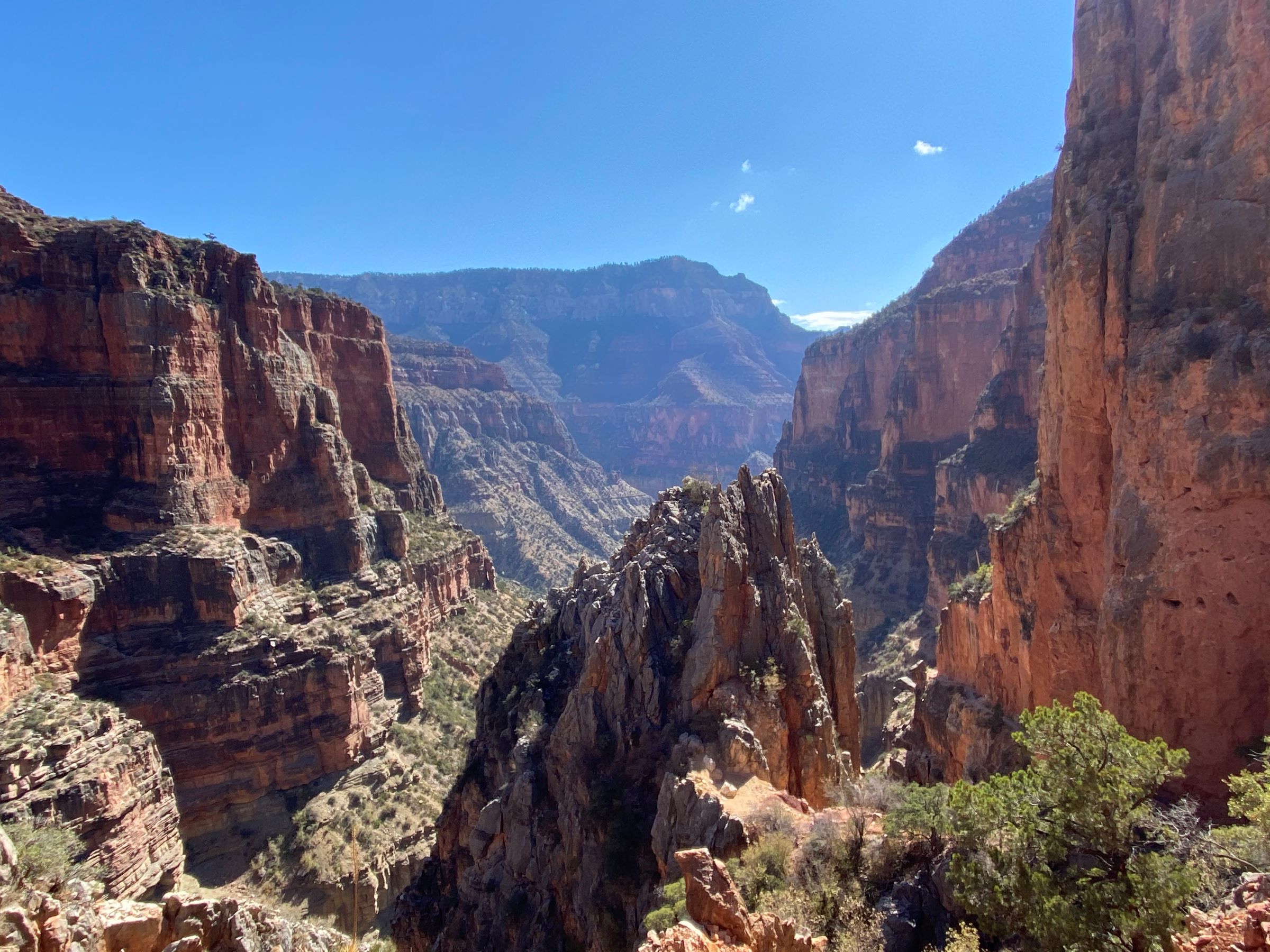
Best Hikes and Viewpoints from the North Rim
There is less to do from the North Rim, but the sights are truly spectacular. I personally loved the North Rim and would return here easily in any of my Grand Canyon itineraries.
1. North Kaibab Trailhead to Roaring Springs – 11 miles, 3500 ft elevation change
North Kaibab Trailhead to Roaring Springs is definitely not for the faint of heart, but it’s absolutely stunning. The landscape changes a lot more than what you would see from the South Rim. Like the South Rim, North Kaibab Trail is also a there-and-back trail, meaning you can turn around at any time if you are tired or out of hiking supplies.
2. Bright Angel Point – Short walk
If you are looking for something shorter, check out Bright Angel Point. This stunning viewpoint is gorgeous at both sunrise and sunet.
Grand Canyon Itinerary for the Adventurous
If you are feeling extra adventurous, I highly highly recommend hiking the Rim to Rim Trail. The Rim to Rim Trail is a 24 mile, one-way hike from North to South Rim (or vice versa). Typically, folks will hike one way from North Kaibab Trail to either Bright Angel or South Kaibab Trail, and then organize a car service back to their car at the North Rim.
More advanced hikers and runners will do the Rim to Rim to Rim, essentially a roundtrip trail clocking in at 48 miles.
For more information, check out my Easy Planning Guide for the Rim to Rim Trail.

Grand Canyon National Park FAQs
1. Can I bring my dog to the Grand Canyon?
Unfortunately no. Like many National Parks, dogs are not allowed. There is a good kennel nearby called the Grand Canyon Kennel. We personally boarded our dogs closer to Flagstaff at Kingsmark Kennels. They were fantastic and I highly recommend them.
2. Can I fill up water once I’m below the Grand Canyon rim?
Maybe but don’t count on it. Once you get below the top rim, there are some water fillup points but they are extremely unreliable. My recommendation is to pack all the water that you need. Turn around when you are almost 1/2 way done with your water. It can get very, very hot in the Grand Canyon and you don’t want to get stuck.
In the summer, I typically pack about 1L for every 2.5 miles of hiking. So on a bigger hike, I’m packing close to 4L of water per person!
3. How many days should I spend at the Grand Canyon?
If you are not hiking the Rim to Rim trail, I would suggest spending 2-3 days at the Grand Canyon. After a while, there isn’t that much more to do since you can only easily explore either the South Rim or North Rim.
4. What is Phantom Ranch?
Phantom Ranch is this awesome accommodation at the bottom of the Grand Canyon. Most people will get there from the South Rim. Reservations are very very difficult and you will need to reserve ahead of time / get lucky. If you can, I would definitely secure reservations for at least 1 night. More information on Phantom Ranch is here.
Have you been to the Grand Canyon before? What are your tips?
My site may contain affiliate marketing links (including the Amazon Services LLC Associates Program), which means I may be paid commission on sales of those products. These are products I fully use and endorse, and my content is not influenced by advertisers or affiliate partnerships.
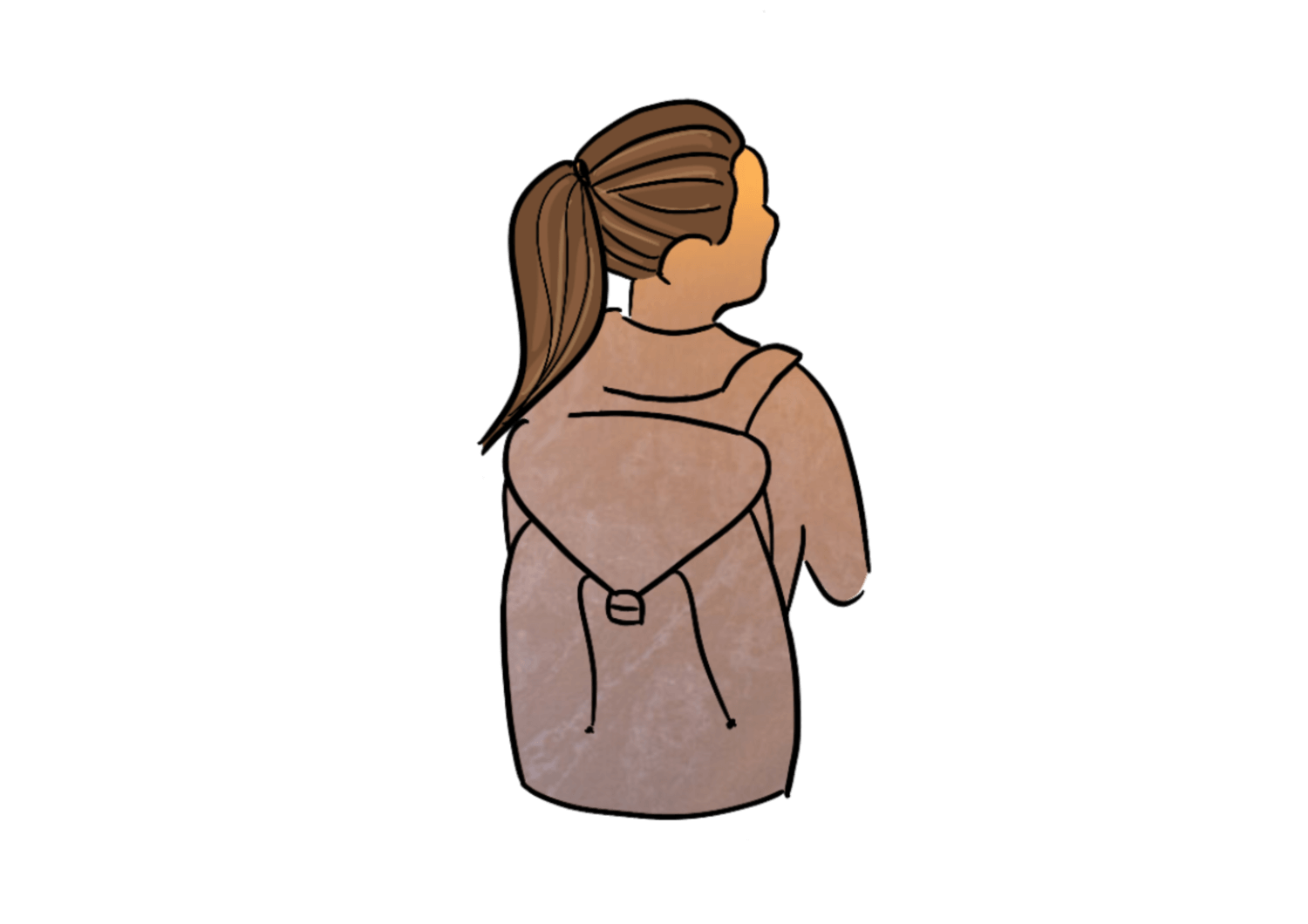
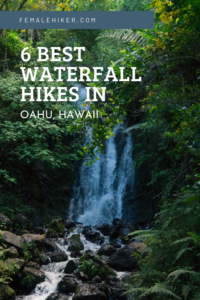
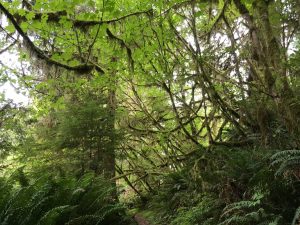
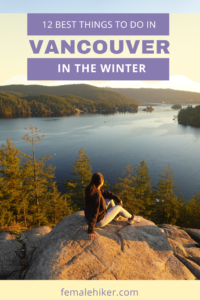
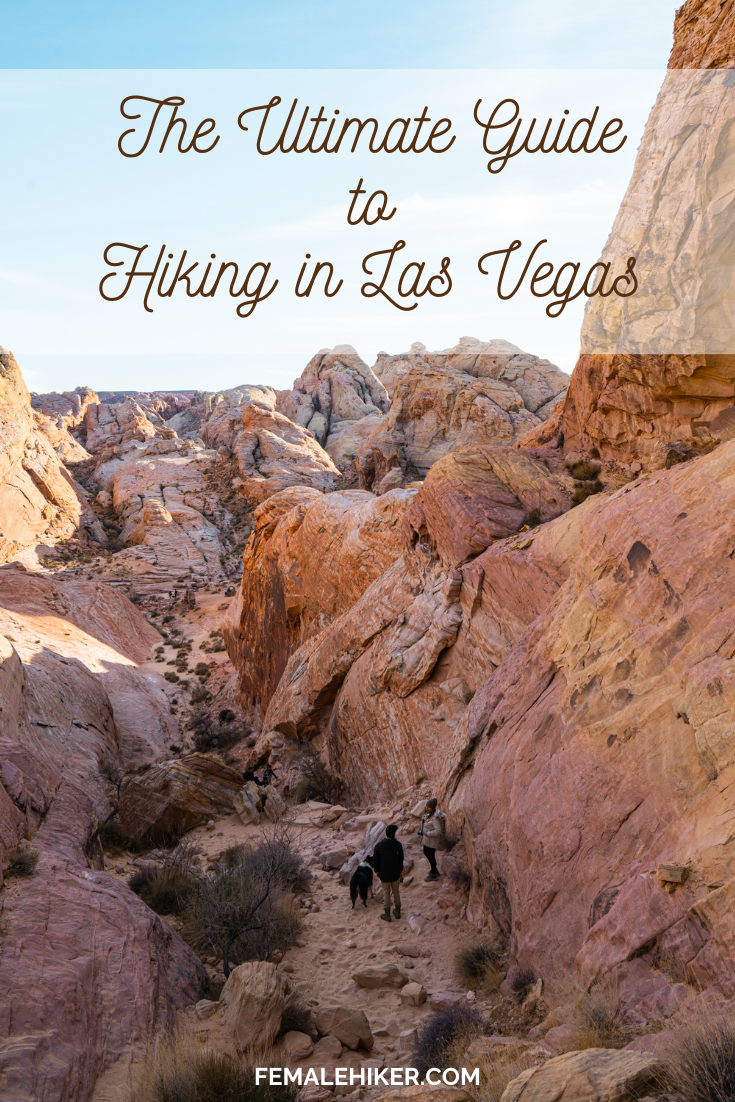
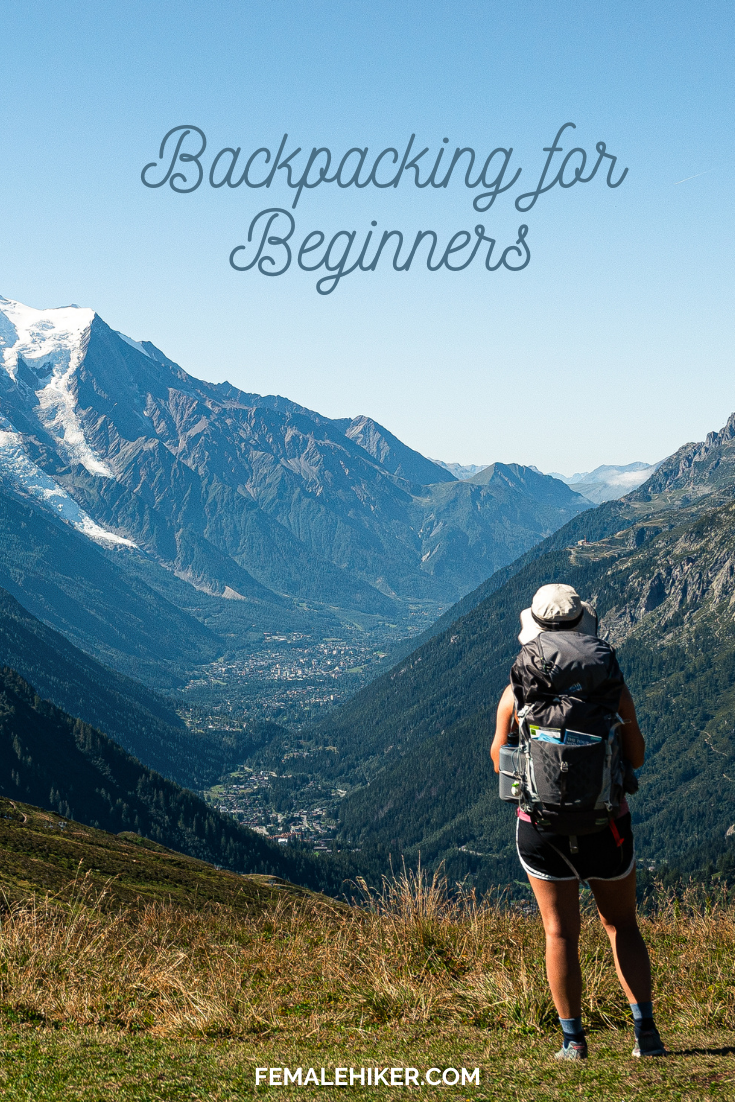
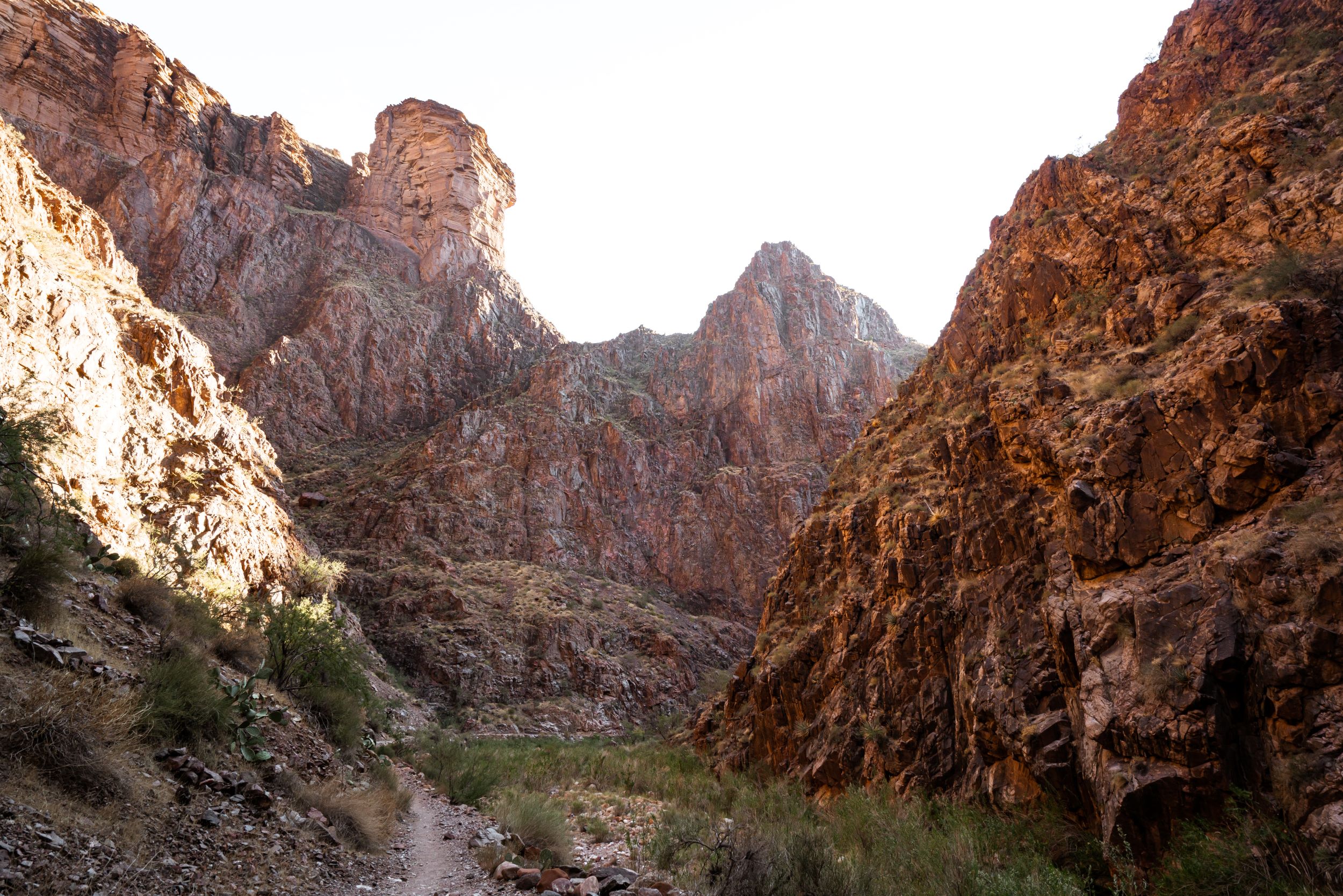
3 Comments
Wow! Amazing information and detail! We are not huge hikers but Grand Canyon is on our list to visit so this post helps a lot!! Thanks for sharing!